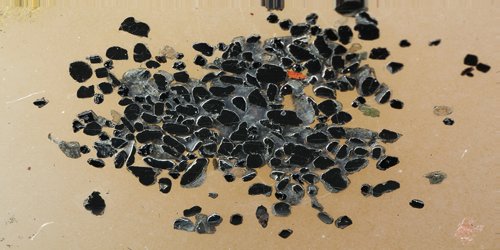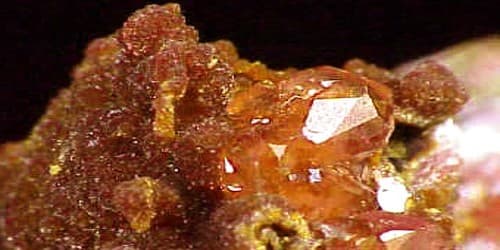Cafetite is a rare titanium oxide mineral with formula (Ca, Mg)(Fe, Al)2Ti4O12·4(H2O). It is named for its composition, Ca-Fe-Ti. It is a rare titanium oxide mineral first discovered in Afrikanda massif, Kola Peninsula, Russia. It was named for its composition Ca, Fe and Ti.
It was first described in 1959 as an occurrence in the Afrikanda Massif, Afrikanda, Kola Peninsula, Murmanskaja Oblast’, Northern Region, Russia. It is also reported from the Khibiny and Kovdor massifs of the Kola Peninsula and from Meagher County, Montana, US.
General Information
- Category: oxide mineral
- Formula: (Ca, Mg)(Fe, Al)2Ti4O124(H2O)
- Crystal system: Monoclinic
- Crystal class: Prismatic (2/m) (same H-M symbol)

Properties
Cafetite can be identified as colorless or pale yellow crystals with good cleavage, white streaks, and adamantine luster. It is transparent in nature. Its fractures appear brittle as shown by glasses and some of the non-metallic minerals. The mineral can be formed as needle-like crystals or aggregates. The relative hardness of cafetite ranges from 4 to 5, and its density is 3.28 g/cm3.
- Color: Pale yellow to colorless
- Crystal habit: Elongated columnar to acicular crystals, fibrous aggregates, pseudo-orthorhombic
- Cleavage: Prismatic
- Tenacity: Brittle
- Mohs scale hardness: 4-5
- Luster: Adamantine
- Streak: White
- Diaphaneity: Semitransparent
- Specific gravity: 3.28
Occurrence
Cafetite occurs as a late mineral in miarolitic cavities in pegmatites cutting a pyroxenite massif. It occurs in pegmatites in a pyroxenite intrusion as crystals in miarolitic cavities. It occurs associated with ilmenite, titaniferous magnetite, titanite, anatase, perovskite, baddeleyite, phlogopite, clinochlore, and kassite.
It is closely associated with Kassite, clinochlore, phlogopite, baddeleyite, perovskite, anatase, titanite, titanomagnetite and ilmenite.
Information Source:
















